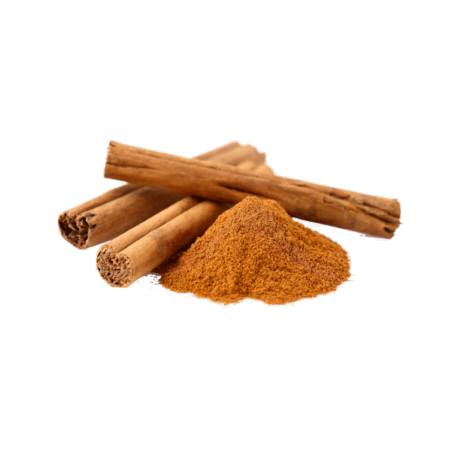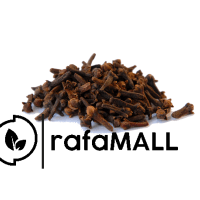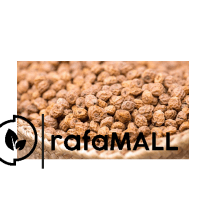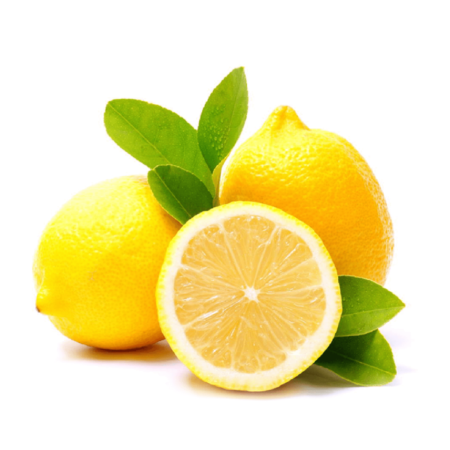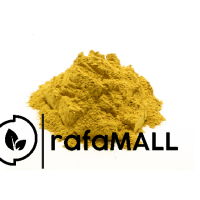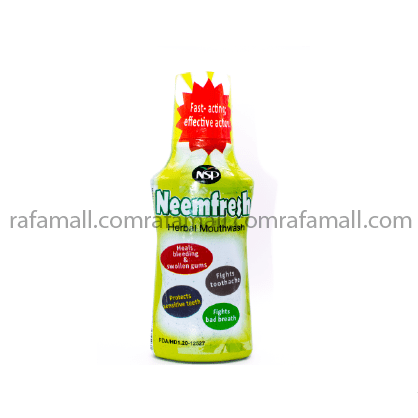-
Cinnamon powder-150g
₵30.00Original price was: ₵30.00.₵25.00Current price is: ₵25.00. Sold By: GMF StoreA small tree with smooth bark; opposite dark green, coriaceous and shiny leaves, obovate, with 3-5 basal nerves, up to 15 cm long and 10 cm broad; flowers unisexual, cream, in axillary and terminal panicles; fruit small drupe.
Studies have shown that the bark of the plant contains volatile oils, mucilage, calcium oxalate, tannins, and starch, all of which work synergistically to give the plant its appetizer, carminative, digestive and stomachic actions (Pamplona-Roger, 11998). C. zeylanicum promotes gastric and intestinal juice secretion and enhances gastric motility. The bark extracts have shown to be effective against fluconazole-resistant and -susceptible Candida isolates in vitro. A small scale clinical trial on AIDs patients showed the herb to be effective for treating oral candidiasis (Quale et al., 1996). Antibacterial actions have also been demonstrated in vitro (Azumi et al., 1997; Bruneton, 1995). C. zeylanicum‟s diterpenes have shown antiallergic activity (Nagai et., 1982). Aqueous extracts exhibited antiulcer effects (Akira et al., 1986). Cinnamon may have hypoglycaemic properties in vitro (Berrio et al., 1992). Its mild astringent action may be due to the tannins. The essential oils of C. zeylanicum, Ocimum gratissimum, Cymbopogon citratus, Eugenia uniflora, and Alpinia speciosa demonstrated inhibitory action against dermatophyte strains in vitro (Lima et al., 1993). The oil and leaf extracts have antiviral activity (Kato, 1975; Leung and Foster, 1996); the eugenol-containing leaf oil has demonstrated antiseptic and anaesthetic properties. Several studies have shown that cinnamaldehyde has hypotensive and spasmolytic effects. It also inhibits the enzymes cyclooxygenase and lipoxygenase and increases peripheral blood flow (Tahara et al., 1986; Harada and Yamazaki, 1981). Extracts have shown antioxidant activity in vitro and may be useful as food antioxidants (Mancini-Filho et al., 1998).
-
Cloves-150g
₵30.00Original price was: ₵30.00.₵28.00Current price is: ₵28.00. Sold By: GMF StoreThe clove tree is monoecious, flowers are hermaphrodite and self-pollinating. The tree matures between 8-10 years after planting. Clove trees live for more than 100 years, the oldest tree recorded is aged 375 years in Indonesia. Generally, it takes 20-30 years for clove to attain full bearing. The best quality cloves for use as a spice are grown in the wetter climates where annual rainfall is in excess of 1,500mm and usually in the range 3,000 – 4,000mm
Cloves, and the essential oil contained in them, are often used medicinally. A spicy, warming, stimulant herb, it is strongly antiseptic, relieves pain, controls nausea and vomiting, improves digestion, protects against intestinal parasites, and causes uterine contractions. Cloves are taken internally as a tea in the treatment of internal parasites, stomach upsets, chills, and impotence. The flower buds are chewed to freshen the breath or ease the pain of toothache.
The essential oil is applied externally in the treatment of toothache, headache, cold, arthritis, and rheumatism. It is also useful for treating ulcers, bruises, burns, bronchitis, asthma, minor infections, and colic. It is sometimes used to ease nausea. Two little-known compounds in clove oil have shown ‘strong activity’ against bacteria associated with plaque formation and gum disease. Clove oil is very potent and can cause gum irritation, it is advisable to dilute it with equal amounts of vegetable oil. For infants and even milder dilution is required. Use should be avoided during pregnancy, or if with sensitive skin
-
Cyperus esculentus (akan name: Atadwe) – 100g
₵15.50Original price was: ₵15.50.₵14.00Current price is: ₵14.00. Sold By: GMF StoreCyperus esculentus is a perennial grass-like plant producing solitary culms 10 – 90cm tall from numerous, spreading, underground stolons. The apex of the stolons swells to form ellipsoid to globose tubers 10 – 18mm long. Tiger nuts are regarded as a digestive tonic, having a heating and drying effect on the digestive system and alleviating flatulence. They also promote urine production and menstruation. The tubers are said to be aphrodisiac, carminative, diuretic, emmenagogue, stimulant and tonic
-
Lemon fruit-500g
₵12.00Original price was: ₵12.00.₵10.00Current price is: ₵10.00. Sold By: GMF Store -
Nauclea latifolia (Kisia) roots – 150g
₵25.00Original price was: ₵25.00.₵20.00Current price is: ₵20.00. Sold By: GMF StoreNauclea consists of the dried transversely sliced and chopped roots of Nauclea latifolia. A straggling shrub or small tree, 2-3 m high; leaves elliptic or rounded-ovate, acuminate tip, cuneate, rounded or subcordate base, 10-20 cm long, 6-12 cm broad; pedicel 1-2cm long. Used in the treatment of diabetes. The root is febrifuge and tonic. The bark and roots of the plant contain more than 1% of an opioid that is clinically identical to the analgesic drug ‘tramadol’. It can be extracted in a cost-effective way to provide an economical source of this widely used analgesic. Extracts of the plant have exhibited activity against Escherichia coli, Shigella flexneri, Salmonella typhi and Staphylococcus aureus (which are responsible for gastroenteritis in children)
-
NeemFresh Herbal Mouthwash
₵35.00Original price was: ₵35.00.₵29.99Current price is: ₵29.99. Sold By: GMF StoreNaturally formulated mouthwash made with Neem tree (Azadiracter indica). It is recommended for toothache, bleeding gum and
- Animal Health
- Anti diabetics
- Anti Lipidemics
- Anti malaria
- Anti Typhoid
- Blood boosters
- Cardiovascular health
- Detoxifiers
- Digestive Health
- Fitness And Sport Nutrition
- Fixed and Essential Oils
- Fruits and Vegetables
- Health Foods And Drinks
- Health Stationery
- Herbal remedies
- Homeopathy
- Immune booster
- Liver Health
- Medical Laboratory Equipment
- Men Health
- Natural Beauty And Personal Care
- Nervous Disorders
- Oral Health
- Other Products
- Pain and inflammation
- Plant Seedlings
- Pure Herbs
- Regenerative Medicine
- Respiratory Tract Health
- Skin Infections
- Sleep And Mood
- Supplement
- Traditional Chinese Medicine
- Ulcers
- Veneral Diseases
- Vitamins and Supplements
- Weight Loss Management
- Women Health

